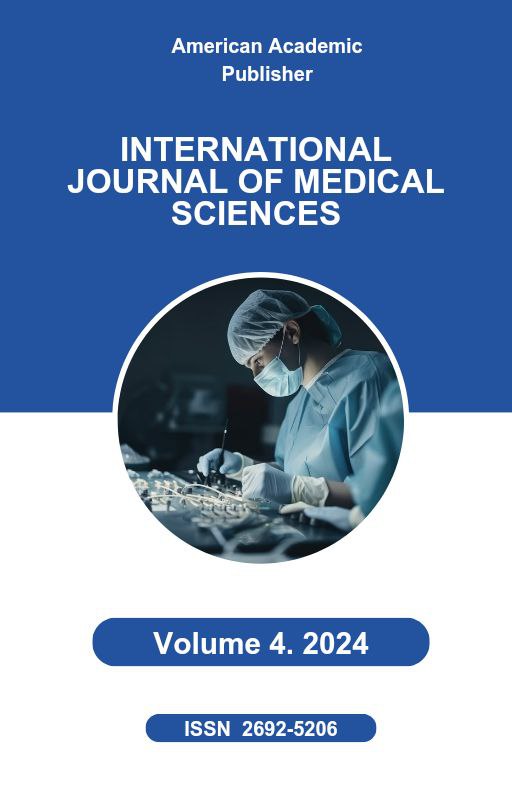 Articles
| Open Access |
https://doi.org/10.55640/
Articles
| Open Access |
https://doi.org/10.55640/
EPIDEMIOLOGICAL CONSEQUENCES OF VACCINE REFUSAL AND PREVENTIVE MEASURES
Oripova Jamila Nematovna , Department of Infectious diseases, Andijan State Medical Institute, Andijan, UzbekistanAbstract
Background: The re-emergence of vaccine-preventable diseases (VPDs) is a growing global concern, largely driven by vaccine hesitancy and refusal. Localized data on the impact of this phenomenon is essential for designing effective public health interventions. This study aimed to analyze the epidemiological consequences of declining vaccination rates in the Andijan region of Uzbekistan and to identify the primary drivers of vaccine refusal among the population. Methods: A mixed-methods study was conducted, combining a retrospective analysis of epidemiological data with a cross-sectional survey. Epidemiological data on the incidence of measles, pertussis, and rubella from 2015 to 2025 were obtained from the Andijan Regional Center for Sanitary and Epidemiological Welfare. Incidence rates were compared between vaccinated and unvaccinated pediatric cohorts. Concurrently, a structured survey was administered to 500 parents of children under five and 100 healthcare workers to assess the reasons for vaccine refusal, information sources, and the perceived effectiveness of current preventive measures. Results: The epidemiological analysis revealed a statistically significant increase in the incidence of measles and pertussis since 2020. The incidence rate of measles was over 40 times higher in unvaccinated children compared to vaccinated children (285 vs. 7 cases per 100,000 population, respectively; p < 0.001). Outbreak mapping identified several geographic clusters with low vaccination coverage. Survey results indicated that the primary reasons for vaccine refusal were fear of side effects (58%), misinformation from social media (45%), and distrust in vaccine quality (31%). Only 25% of hesitant parents reported receiving sufficient information from healthcare providers. Conclusion: Vaccine refusal is creating a significant public health vulnerability in the Andijan region, leading to preventable outbreaks of VPDs and threatening herd immunity. The findings highlight an urgent need for targeted, multi-pronged strategies that focus on combating online misinformation, enhancing healthcare provider communication skills, and rebuilding public trust in the national immunization program.
Keywords
Vaccine hesitancy, vaccine refusal, epidemiological consequences, measles, vaccine-preventable diseases, public health, preventive measures, Uzbekistan.
References
Cinelli, M., Quattrociocchi, W., Galeazzi, A., Valensise, C. M., Brugnoli, E., Schmidt, A. L., ... & Scala, A. (2020). The COVID-19 social media infodemic. Scientific Reports, 10(1), 16598.
Dubé, E., Gagnon, D., & MacDonald, N. E. (2015). Strategies to support vaccination acceptance and uptake. Canada Communicable Disease Report, 41(Suppl 6), 21–26.
Fine, P., Eames, K., & Heymann, D. L. (2011). "Herd immunity": a rough guide. Clinical Infectious Diseases, 52(7), 911–916.
Larson, H. J. (2018). The biggest pandemic risk? Viral misinformation. Nature, 562(7727), 309.
MacDonald, N. E., & SAGE Working Group on Vaccine Hesitancy. (2015). Vaccine hesitancy: Definition, scope and determinants. Vaccine, 33(34), 4161–4164.
Omer, S. B., Salmon, D. A., Orenstein, W. A., deHart, M. P., & Halsey, N. (2009). Vaccine refusal, mandatory immunization, and the risks of vaccine-preventable diseases. New England Journal of Medicine, 360(19), 1981–1988.
Phadke, V. K., Bednarczyk, R. A., Salmon, D. A., & Omer, S. B. (2016). Association between vaccine refusal and vaccine-preventable diseases in the United States: A review of measles and pertussis. JAMA, 315(11), 1149–1158.
Rappuoli, R., Pizza, M., De Gregorio, E., & Del Giudice, G. (2014). The age of vaccines. EMBO Molecular Medicine, 6(6), 705–708.
Article Statistics
Downloads
Copyright License

This work is licensed under a Creative Commons Attribution 4.0 International License.

